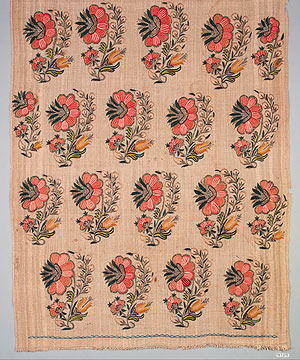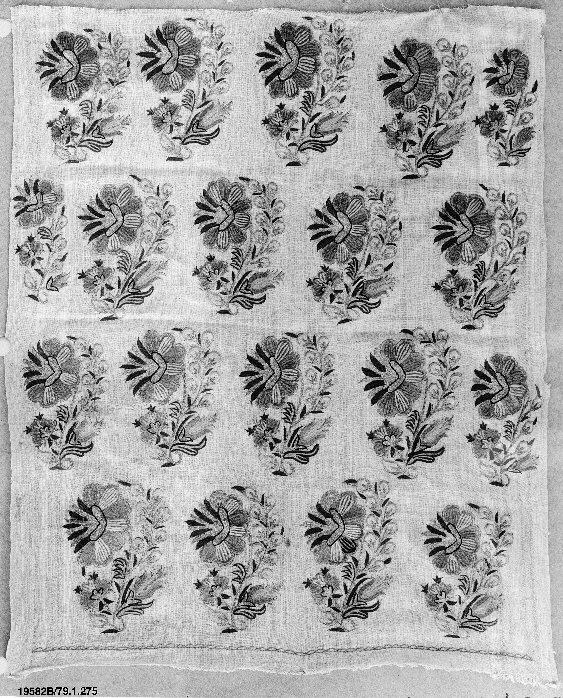Towel End
Not on view
Ottoman embroidery before the eighteenth century tended to replicate the opulence of court weaving, and more often was produced as less expensive versions of the magnificent woven silks and velvets. This towel end lends support to the suggestion that Ottoman embroidery was not regarded as an art form until 1720, when it stopped copying woven designs and became truly creative, and new and more naturalistic floral motifs were permitted to sway more freely across the field of the design. In this charming piece, the formality of the floral rows is betrayed by the playful insertion of smaller flowers at the end of the rows. In contrast to the works of earlier periods, the freestanding floral arrangements in the present piece typify the early nineteenth-century Ottoman embroideries. The absence of interconnecting stems or trellis links, so common in the eighteenth century, create a more open framework for the celebration of a perennial Turkish delight: the flower. With the rigidity of "Turkish towel" borders as yet to come, and the copyist style of the eighteenth century well behind, this piece heralds a quiet revolution in Ottoman embroidery and points to a greater interest in European decorative arts in the century ahead.
Due to rights restrictions, this image cannot be enlarged, viewed at full screen, or downloaded.
This artwork is meant to be viewed from right to left. Scroll left to view more.




